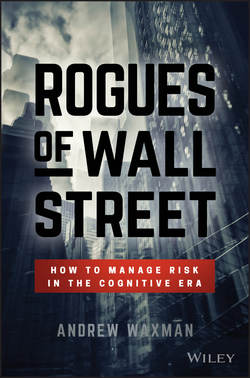Читать книгу Rogues of Wall Street - Waxman Andrew - Страница 11
На сайте Литреса книга снята с продажи.
CHAPTER 2
The Rogue Trader
Tools of the Rogue Trader's Trade
ОглавлениеA trader seeking larger profit opportunities has to exceed his limits without seeming to – that is, through various means of deception. The basic objective is always to make sure that the trading book does not cause any unusual questions to be asked by supervisors, controllers, and limit checkers. In general this means making it appear that the trader's positions and risk levels are reasonably well hedged in line with expectations and prescribed limits. There are many tricks that may be employed in order to do this. Here are just a few that have been identified.
Intraday Trading
One opportunity traders on occasion take advantage of is the fact that their trading limits are generally set for the end of the trading day rather than intraday. The reason for this is simple: At the end of day, traders' positions are closed and static and therefore easily measurable. During the day, however, positions are constantly being updated and changed to reflect active trades and other transaction data. As a result, traders may execute trades in excess of their end‐of‐day limit during the trading day, either intentionally or unintentionally. As long as traders are able to bring their positions back down by day‐end, any intraday position excesses are normally unexamined. A deliberate strategy to trade beyond a trader's end‐of‐day limits by a considerable amount intraday is not necessarily easy to catch for the reasons just discussed. Furthermore, it is arguable, and has been argued by risk managers, that since the limit is an end‐of‐day limit, trading beyond it during the day is neither illegal nor unauthorized. While difficult to catch and prove, the extent of any loss is limited to those that can accumulate in a single day, which of course can be in the millions.
Phantom Trades
Another strategy a trader may employ is to modify the trading book prior to the supervisory and controller review at the end of the trading day (supervisors are expected generally to review trader activity at the end of the day). This can be done by creating nonexistent trades to balance out the real trades. Subsequent to the reviews, the trader cancels out the nonexistent trades and repeats such activities on a nightly basis.
Fake Counterparties
Another strategy has been to create fake counterparties to trade with, thereby allowing fictitious trades with that counterparty to be entered into his trading book to balance out the real trades. In all these cases, the trader creates an illusion of a hedged book. In reality, the book is anything but hedged.
Slush Fund
In order to allow such a strategy to work over a period of time, the trader needs to keep undue attention away from himself. He is thus likely to use a secret account that enables smoothing of profits over time so neither profits nor losses are overly excessive. Excess profits may be transferred to the secret “slush fund” account on good days and transferred back to the trading account on bad days. The creation and use of such accounts was a key point discussed at the trial of Kweku Adoboli. Such accounts normally can be created fairly easily though it may require controllers' help (knowingly or unknowingly) to evade their detection.
Developing expertise in or gaining access to back‐office systems in order to evade them then is a core part of the Rogue Trader's skill set. However, as we saw with the Rochdale case, a trader can sometimes do untold harm with one trade that gets through the system, which is well beyond the limits that can be borne by the firm. A small firm can have zero tolerance for such fatal trades whereas a large investment bank or hedge fund has most to fear from the type of rogue trading that took place at UBS.
